FRANCE’S PROVENCE WINE REGION
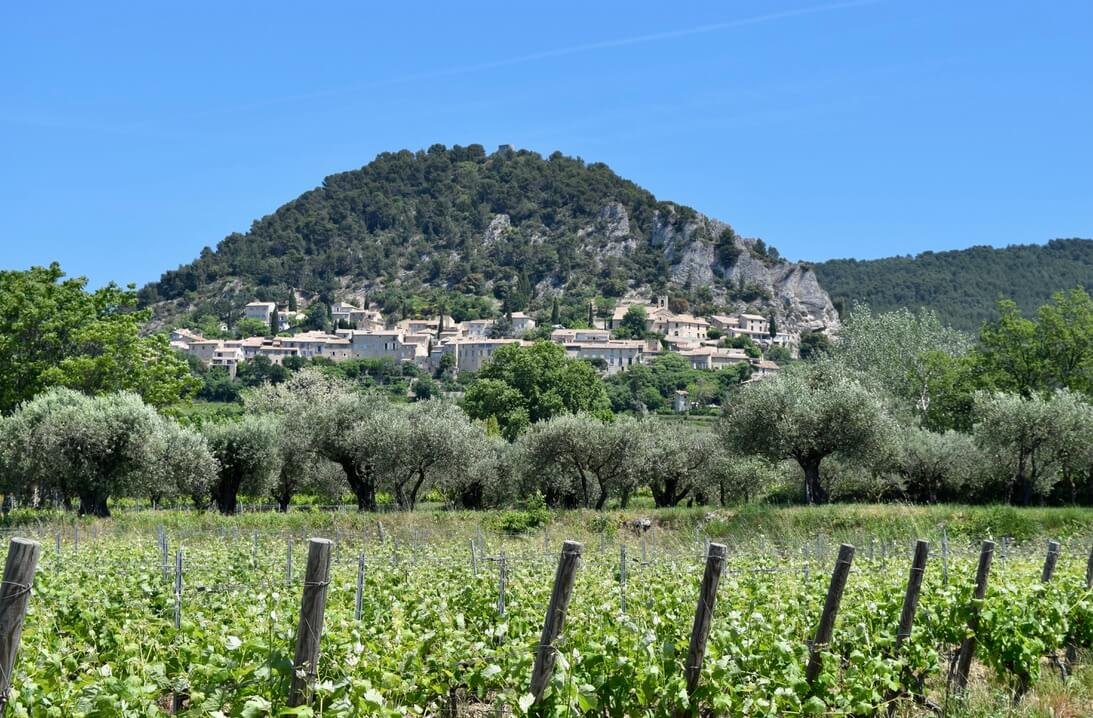
Beautiful Seguret in the Vaucluse
Photo source: Winekeller
Our wine tour experiences in France’s Provence wine region:
France’s Provence wine region: an introduction
Provence in the south-east corner of France, with its turquoise waters, beautiful bays, endless sunshine, lavender fields and evocative scents of pine and thyme is a favourite of the international jet-set, celebrities and the yachting crowd. This world-famous tourist hot-spot has also become known over recent years, for its rosé wine.
In our opinion there’s nowhere better to enjoy a chilled Provençal rosé wine, perhaps to accompany a salad niçoise or some fresh fish over lunch or in the evening. There’s also nowhere better to enjoy a stunning Mediterranean coastline, beautiful hilltop villages and rugged, mountainous hinterland.
You may have to work hard to avoid the crowds, especially in high Summer, but there’s nowhere quite like beautiful Provence.
The beautiful Var region of Provence
On the beach in Nice
Mont Ventoux
A typical Provence vineyard
Provençal Rosé wines
Where in France is Provence?
Provence stretches along the south-east coast of France for around 200km, from the border with the Languedoc-Roussillon region in the west through to the popular city of Nice in the east.
The climate is definitely Mediterranean, with long hot, dry Summers, but this is tempered by the cooling effects of the Mistral winds and storms and high rainfall in spring and Autumn.
The region is quite varied geographically, which explains why Provençal rosé wine can vary so much in character, especially in the east of the region, with the influence of the Massif des Maures mountain region. The terroir is limestone inland, with some schist nearer the coast and typical French, herb-scented, ‘Garrigue’ scrubland.
Provençal grape varieties
Provençal rosé wine is a highly fashionable drink, especially during the warm Summer months - a pale-pink, dry wine, made to be drunk young and enjoyed chilled.
The majority of wine produced in Provence is rosé, however some whites and reds are produced across the region. Traditional Provençal grape varieties flourish alongside more well-known international grape varieties.
About a fifth of Provençal wines are organically grown.
Provence wine map
Source: Wine Folly
Grenache Noir and Cinsault are grown across the region and form the staple of much of the Provençal rosé wine. Traditional red varieties Carignan and Mourvèdre are often added to blends in the hotter southern parts of the region, whereas Syrah is grown in some of the cooler, more northern regions.
A popular white wine grape in Provence is Vermentino, known locally as Rolle. Other key white grapes include Viognier (grown in the cooler regions), Clairette, Sémillon, Grenache blanc and Bourboulenc.
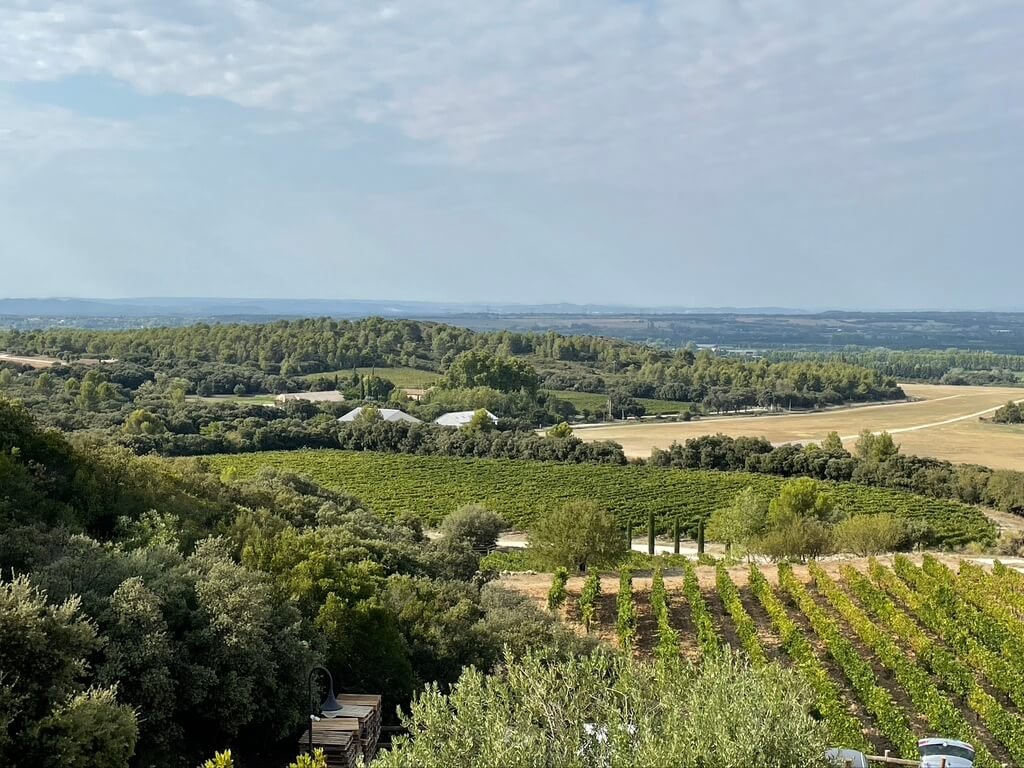
The stunning landscapes of Les Baux-de-Provence
Photo source: Winekeller
Provence appellations
Despite its size, there are only a small number of Provence appellations, the main one being Côtes de Provence, which dominates the dramatic eastern region around the Massif des Maures mountain range and popular coastal resorts such as St Tropez, Fréjus, Cavalaire-sur-Mer and Le Lavandou. There is also a pocket of Côtes de Provence north of Marseilles.
Other key Provence appellations include:
Côteaux-d’Aix-en-Provence - north and west of the popular, elegant city of Aix en Provence (this area also includes a tiny appellation called Palette, which covers the actual city)
Côteaux Varois - north of Toulon and just west of the main Côtes de Provence area
Les Baux de Provence - named after the very popular tourist hilltop village with the same name and home to some great rosés, whites and reds - this appellation dictates 100% organic vineyards
Bandol - probably the most respected appellation on the Mediterranean coast. In addition to its excellent rosés, Bandol is known for its very Mediterranean-style red wines, based on the Mourvèdre grape
Cassis - just down the coast from Bandol, known for its herby, full-bodied white wines - superb with the local shellfish and Mediterranean staple, Bouillabaisse (fish stew)
Bellet - tiny appellation producing wines in the hilly terraces above the city of Nice
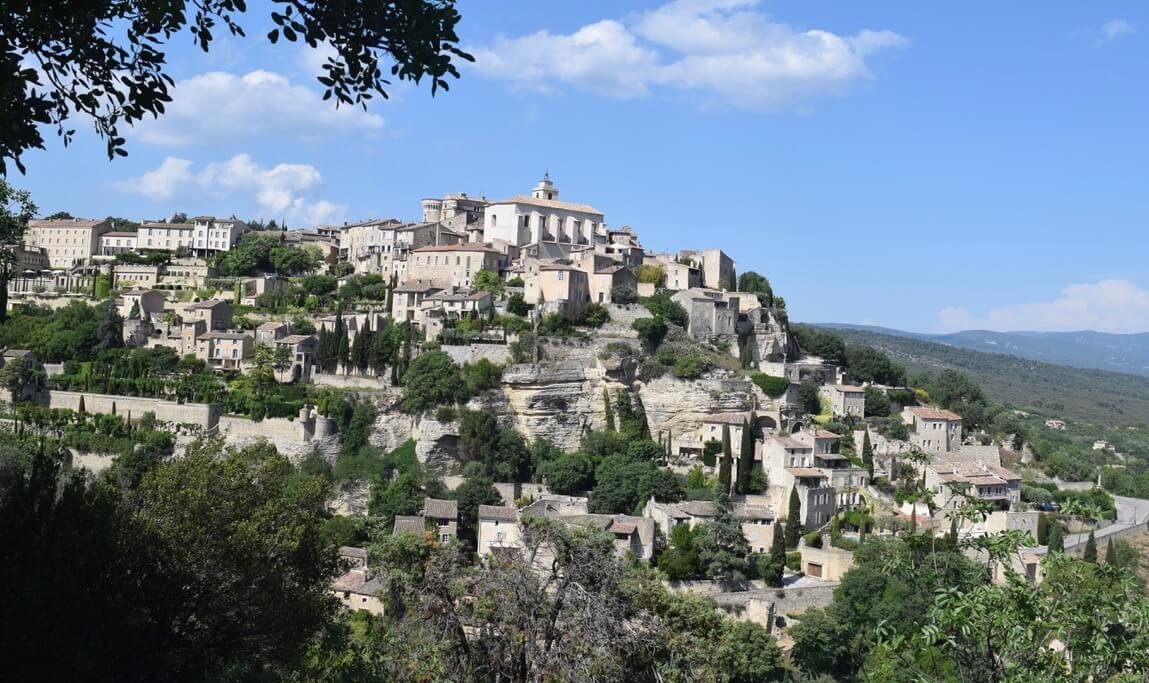
Spectacular Gordes in Provence
Photo source: Winekeller
Recommended Provence vineyards and wineries
See recommendations in each separate wine travel blog
The best places to visit in Provence
Provence-Alpes-Côte d'Azur is a very large French region, consisting of 6 départements and 3 very different and distinctive areas - there is lots of choice when it comes to planning a wine holiday or wine tour in Provence. There really is something for everyone!
The Mediterranean coast
The Provence coastline incorporates 3 separate départements, Alpes Maritimes, Var and Bouches du Rhône.
In the east of the region, it includes the playground of the rich and the famous resorts of the Côte d’Azur or French Riviera, extending from Hyères to Menton - resorts such as Monaco/Monte-Carlo, Nice, Cannes, Antibes and St Tropez.
Travelling west, it also includes the great ports of Marseilles and Toulon and the beautiful nature reserve and wetlands of the Camargue.
The stunning Côte d’Azur
Monaco and Monte Carlo
St Tropez old port
The mountains
Still in Provence, the Alpes d’Azur rise above Nice, up to an altitude of 4000m. Including the départements of Hautes Alpes and Alpes de Haute Provence you can ski here in the Winter and enjoy a whole host of healthy, outdoor pursuits in the Summer.
The most beautiful villages in Provence - the ‘heart’ of Provence
Stepping back from the busy coastal tourist resorts, you can find the true heart of Provence - linking the Mediterranean sea with the mountains - the home of dreamy hilltop villages, river gorges and valleys, vine-covered slopes, real locals and authentic Provençal cuisine.
This is the true Provence, made famous by the many artists who came to capture its amazing light and then made more famous by the author Peter Mayle who made the ‘Luberon’ his home and told us all about it in his books - ‘A year in Provence’ and ‘Toujours Provence’.
In the Provence heartland there are amazing regions and beautiful, historic cities, towns and villages to visit - here are some favourites:
The beautiful Luberon region made famous by author Peter Mayle
Bouches du Rhône:
Visit the amazing Bouches du Rhône region - there is so much to explore here and definitely something for everyone! Explore the beautiful Alpilles area - said to be the most authentic area of Provence - with its famous hilltop village of Les Baux de Provence - said to be the most beautiful village in France.
Also visit the historic Roman city of Arles, the elegant city of Aix-en-Provence, the old capital of Provence and the stunning Camargue region, with its historic capital Les-Saintes-Maries-de-la-Mer.
The hilltop village of Baux-de-Provence
The ancient Roman city of Arles
Saintes-Maries-de-la Mer in the Camargue
Vaucluse:
Visit the beautiful Vaucluse - where viticulture reigns supreme - this is a superb wine tourism destination! The vineyards here are actually part of the Southern Rhône wine region, but geographically and administratively, they are in Provence!
Make sure you visit the famous Luberon region with its national park and beautiful hilltop villages of Ménerbes, Lourmarin and Gordes.
Visit beautiful Avignon and make time also to explore L’Isle-sur-la-Sorgue with its Provençal markets and pretty canals.
And of course visit the famous Rhône wine appellations and villages of Gigondas, Vacqueyras, Châteauneuf-du-Pape and Beaumes de Venise. Marvel at the mountain ranges of Mont Ventoux, the Dentelles de Montmirail, the Monts de Vaucluse and Montagne du Luberon and be blown away by the beautiful hilltop village of Séguret - another of the ‘most beautiful villages in France’.
The Palais des Papes in Avignon
The stunning town of Gordes in Vaucluse
The canals in L'Isle-sur-la-Sorgue
The Var
The coastal resorts of the Var region are always worth visiting of course, think St-Tropez, Cavalaire-sur-Mer and Sainte Maxime - but don’t neglect inland! Travel inland a bit to find the beautiful villages of Gassin, Grimaud (visit Port Grimaud on the coast) and Cogolin. Travel further inland still to the Haut Var to find beautiful mountains, gorges, rivers and amazing nature. A must is to see the stunning Gorges du Verdon. Drive through the canyon, visit the beautiful lakes and stop off in the gorgeous villages - Moustiers-Sainte-Marie being our favourite!
Grimaud hilltop village in the Var
Castellane in the Verdon canyon
The beautiful Gorges du Verdon
Getting to Provence
Provence is served by 2 international airports, Nice and Marseilles and 2 regional airports Avignon and Nîmes.
If you decide to drive your own car to Provence, you need to allow at least 10 hours to reach Avignon from the ports in the north of France. We would always recommend breaking your journey up and staying 1 or 2 nights en route - Burgundy is a great stopover location!
The beautiful lavender fields in Provence
When to visit Provence
May, June and September are wonderful times of the year to visit Provence, when you also avoid the large crowds and traffic.
Best times to visit lavender fields in Provence
However, many people flock to Provence to enjoy seeing the wonderful fields of lavender in full bloom - and to do this, you need to plan to go there some time between the end of June and the beginning of August!
Provençal food
Food plays a huge role in Provençal culture and daily life and the local market is the best place to see the fresh, Provençal produce!
The cuisine of Provence is based on Mediterranean influences and superb local ingredients such as fresh fish, shellfish and anchovies, amazing vegetables including garlic, capers, olives, tomatoes, red peppers, courgettes/zucchini, aubergines /eggplants, sumptuous fruits including melons, apricots, strawberries and peaches, meats especially lamb and goat, pork and wild boar dried sausages (saucissons) flavoursome herbs and the local delicacy, truffles.
Typical fresh fish stall in the local markets
Fresh olives
French saucissons

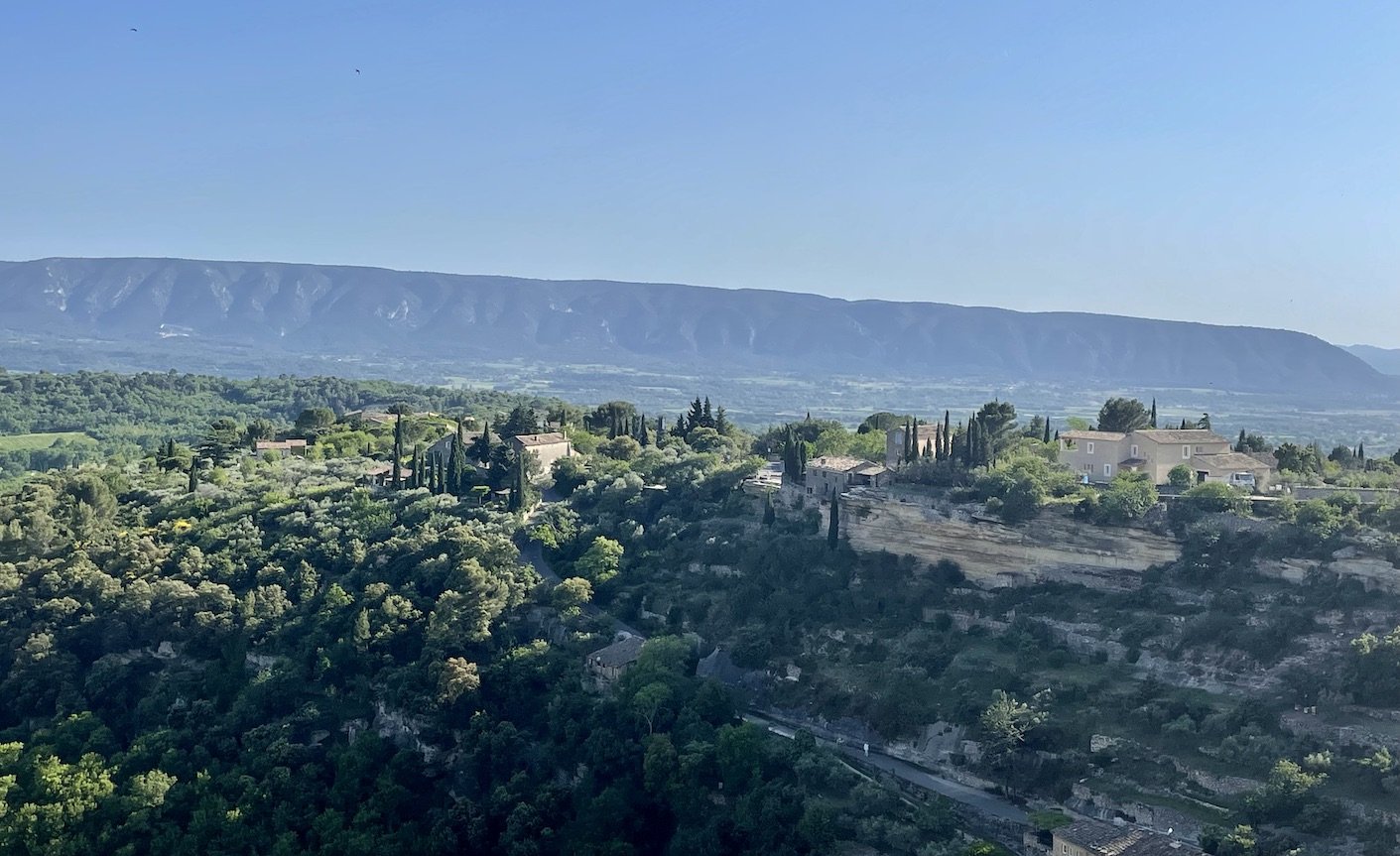


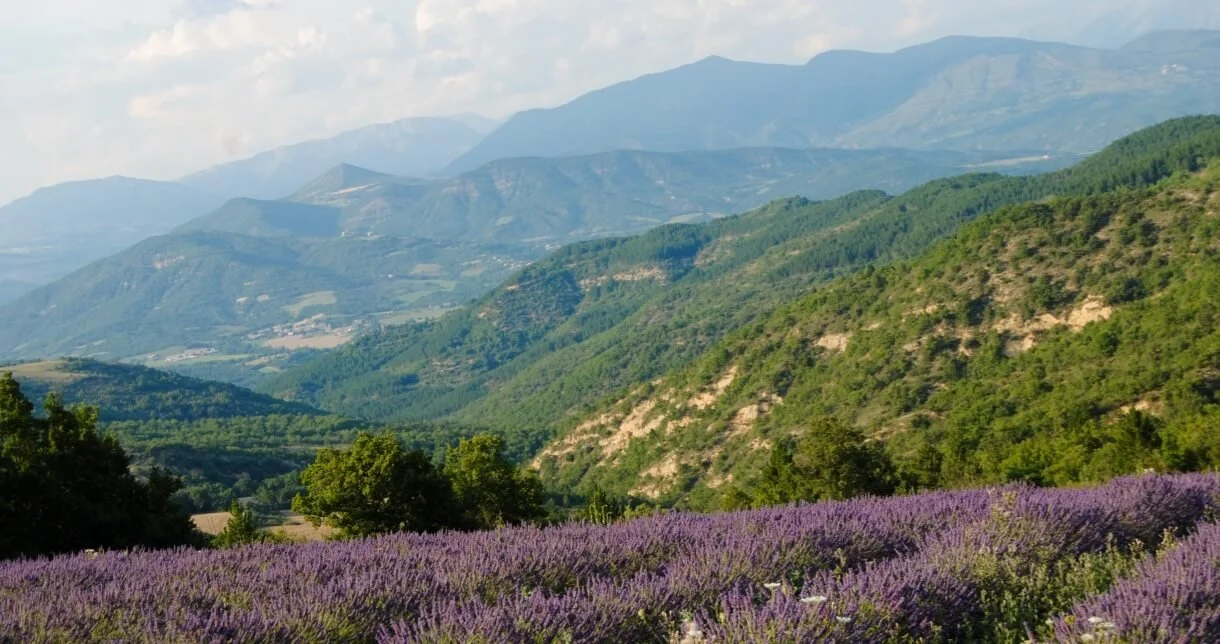
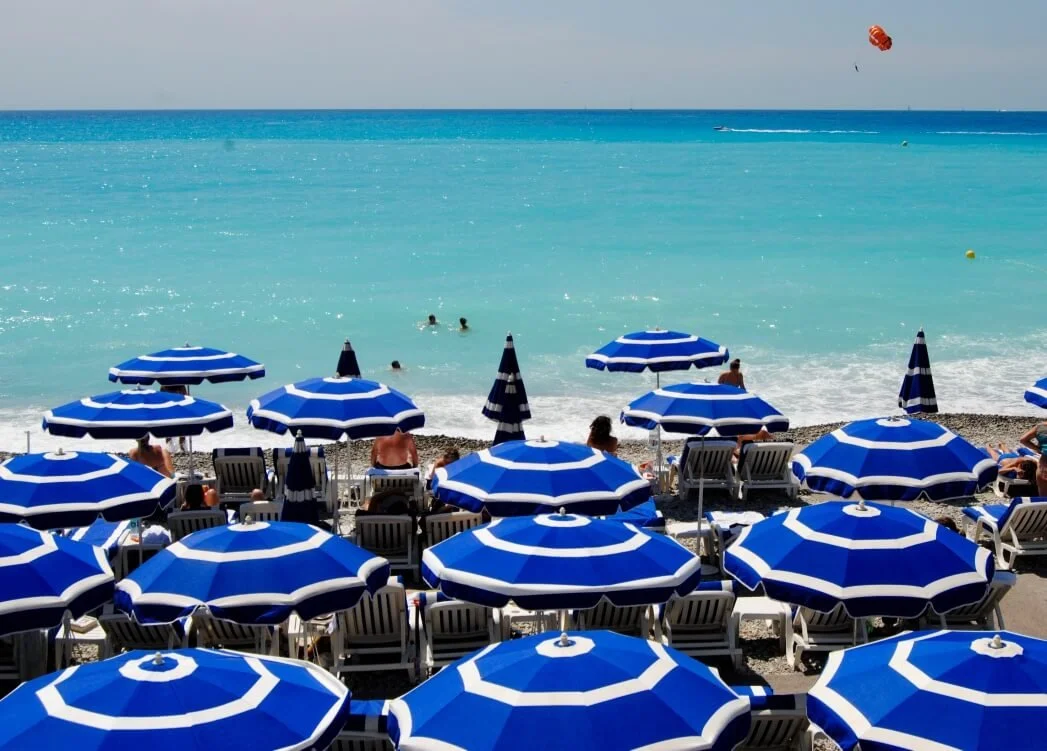
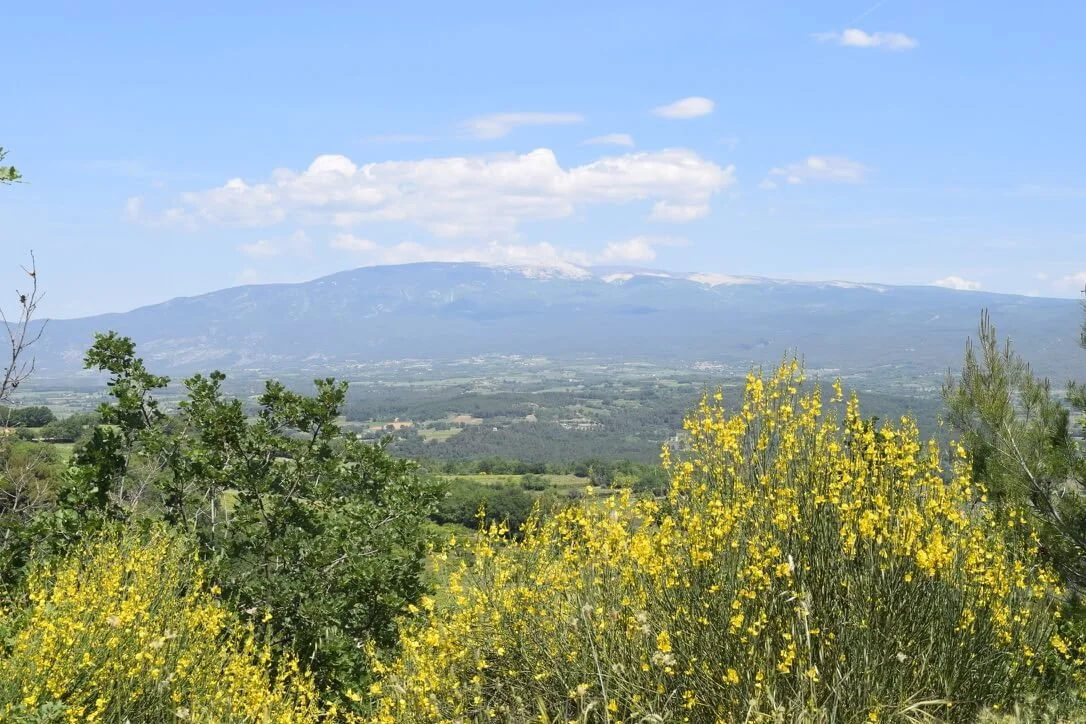

Mont Ventoux is the highest mountain in western Provence and one of the greatest cycling challenges in Europe, playing a starring role in the annual ‘Tour de France’. But did you know that the Ventoux wine region in southern Rhone is one of the most exciting wine regions in France - and one of the most beautiful? Read on to find out why!